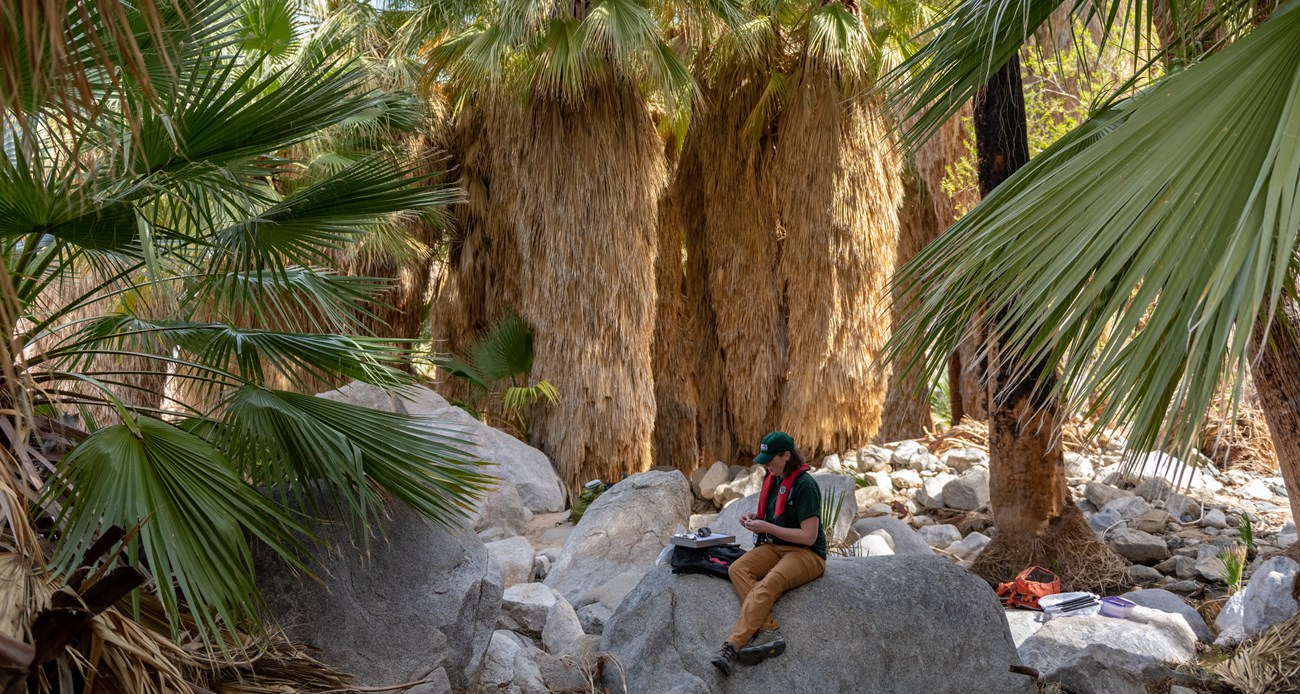Last updated: August 20, 2025
Article
Delve into Dragonflies: Distance Learning with the DMP

Stay Healthy, and Stay Curious!
As our global community takes the necessary steps to practice self-care and social distancing, the Dragonfly Mercury Project – a dynamic national scale program coupling scientific efforts to understand mercury pollution risks to national parks with citizen engagement and education – is here to extend a virtual hand and offer some exciting ways for you to engage with the project from home! We hope these resources help you discover a new invertebrate, explore national parks, and investigate mercury: a pollutant that can harm fish, people, and yes – dragonflies.
The bonus is that you can do this all from the comfort of your home!

NPS/ALESSANDRA PUIG-SANTANA
What Can I Do From Home?
- Check out this sampling demonstration video to see what it’s like to sample dragonfly larvae! You can find more videos by searching “Dragonfly Mercury Project” on YouTube.
- Click through our interactive Story Map that walks you through the project history, data, and results.
- Visit our interactive Dragonfly Mercury Data Map and travel virtually through the national parks to see what parks have discovered about mercury in their ecosystems.
-
Download the data on mercury in dragonfly larvae and play around! The coolest part about this data is that it was collected by citizen scientists, volunteers who are curious about our environment, just like YOU!
-
Organize the data from east to west or from high to low, and construct a hypothesis, or an educated guess, at the outcome of such an experiment!
-
Want to get better at creating and understanding scientific data? Here are some tools to help you turn data into graphs and investigate dragonfly mercury data.
-
Need some fresh air? Take this time to get outside and discover what animals live in your backyard. If you have a pond or stream you can safely access, take a closer look—there just might be dragonfly larvae living there!
-
If you’re curious about what it takes to identify larvae, (or if you just like to get a closer look at bugs), see this video on identifying dragonfly larvae to family. Here is a guide to aquatic invertebrates to help you identify what you find.
-
Become an iNaturalist! Download the App on your phone, head outside responsibly, and report observations of biodiversity in your backyard. Sign up and then submit photos of plants, animals, and of course dragonflies!
-
Stay connected to your local park and explore it either virtually or in person! Nature can be therapeutic, especially in stressful times.
-
Look up #dragonflymercuryproject on social media to stay updated on the latest discoveries! Email us with any questions.

